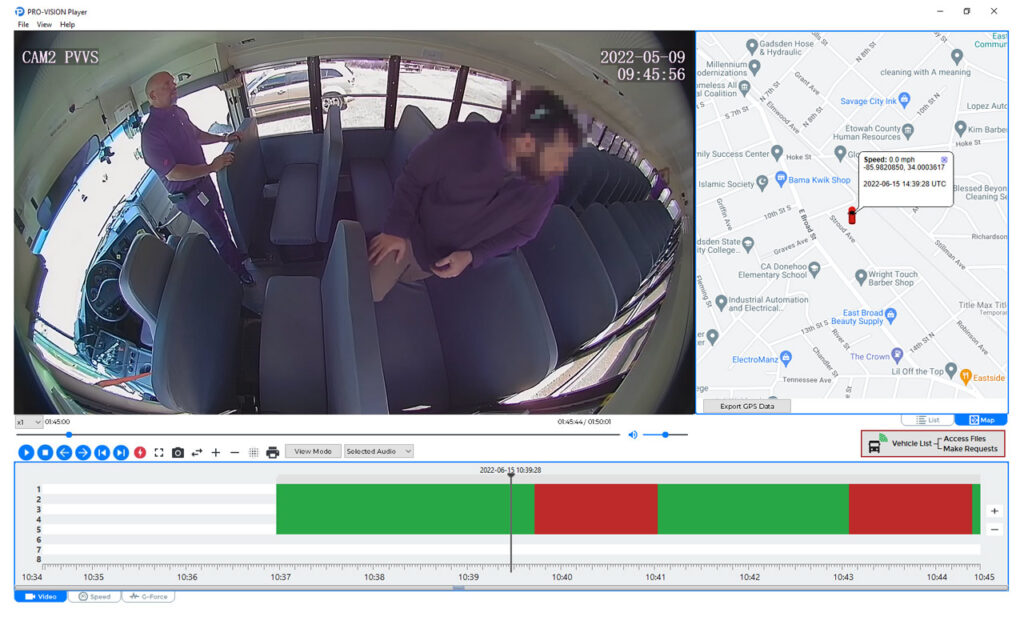What Is Video Telematics? Understanding the Latest Trend in Fleet Management
Video telematics, a cutting-edge technology that combines video with traditional telematics systems, is revolutionizing fleet management. Unlike conventional telematics, which primarily relies on GPS and vehicle diagnostics, video telematics integrates vehicle-mounted cameras with telemetry data. This powerful combination provides invaluable insights into driver behavior, road conditions, and overall fleet performance, enabling fleet managers to make data-driven decisions that enhance safety, efficiency, and productivity.
How Video Telematics Works
Video telematics systems consist of cameras installed on vehicles that continuously record and transmit footage to the cloud. This video data is synchronized with telemetry information, such as vehicle speed, location, and harsh braking events. Advanced analytics algorithms process this combined data to identify patterns, trends, and potential areas of concern, providing fleet managers with a comprehensive view of their operations.
The real-time nature of video telematics allows you to proactively address issues and make informed decisions based on accurate, up-to-date information. With this level of visibility and control, you can optimize your fleet’s performance and ensure the safety of your drivers and other road users.

Benefits of Video Telematics
Improved Driver Safety
By monitoring driver behavior in real-time, video telematics helps identify risky driving practices, such as speeding, harsh braking, or distracted driving. As a fleet manager, you can use this information to provide targeted coaching and training, reducing the risk of accidents and promoting a safer driving culture.
Moreover, video telematics highlights positive driving behaviors, allowing you to recognize and reward your safest drivers. This approach fosters a culture of safety and encourages all drivers to adopt best practices behind the wheel, ultimately leading to fewer accidents and lower costs associated with incidents.
Better Risk Management
The comprehensive data provided by video telematics is invaluable for insurance and risk management purposes. In the event of an accident, video footage can help determine fault and protect your company from fraudulent claims, leading to lower insurance premiums and reduced legal costs.
Furthermore, video telematics data can create detailed risk profiles for individual drivers and your fleet as a whole. This information allows you to proactively address potential risks and implement targeted risk management strategies, further enhancing safety and reducing costs associated with accidents and incidents.
Why Choose Pro-Vision for Your Video Telematics Needs?
At Pro-Vision, we provide industry-leading video telematics solutions tailored to your specific needs. Our state-of-the-art video recording systems, real-time data monitoring, and sophisticated cloud storage ensure that you have the tools necessary to maximize safety, productivity, and profitability.
Our system has the ability to integrate dash cams, interior cameras, side vision system, and backup cameras that display on a screen in the cab. This improves the operator’s visibility and simultaneously records all views.
Our exceptional customer care team will work closely with you to create a custom, turn-key solution that addresses your unique challenges and goals. With Pro-Vision, you can rest assured that your fleet is in good hands.
FAQs
What types of vehicles can benefit from video telematics?
Video telematics is suitable for a wide range of vehicles, including commercial fleets, school buses, public transit, and law enforcement vehicles. Any organization that prioritizes fleet safety, efficiency, and asset protection can benefit from this technology.
How does video telematics help with driver coaching?
By providing objective, real-time data on driver behavior, video telematics enables targeted coaching and training. Fleet managers can identify specific areas for improvement and work with drivers to develop safe, efficient driving habits. This personalized approach to driver coaching is more effective than generic safety training programs.
Is video footage from telematics systems admissible in court?
Yes, video footage from telematics systems is generally admissible in court, provided it is properly authenticated and relevant to the case. This can be invaluable in the event of an accident or legal dispute, as it provides an objective record of events that can help determine fault and liability.